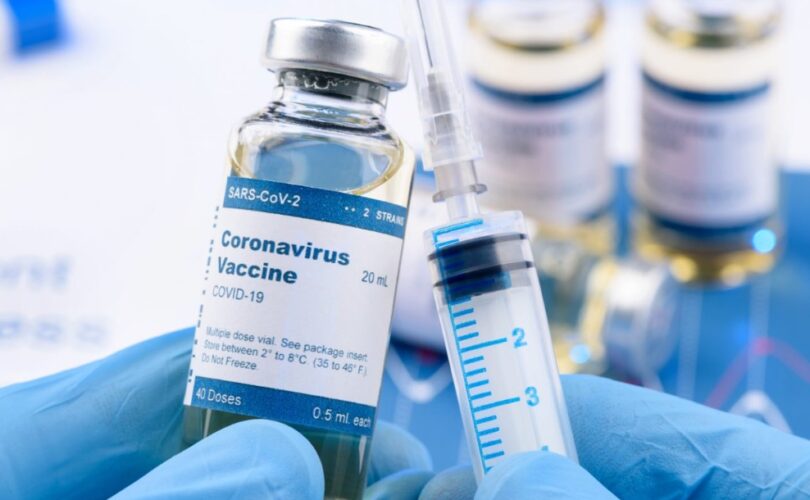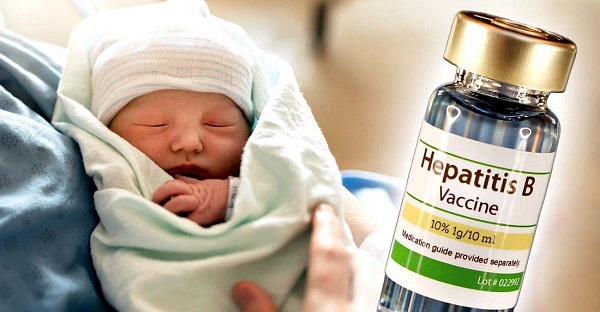Brownstone Institute
Kid Lab Rats

From the Brownstone Institute
BY
” (since [Covid] is universally mild in children), the risk-to-benefit ratio for the [Covid] mRNA injections in children is infinitely bad,” Baker said. “There is no ethical reason whatsoever to continue clinical trials of these products in children, and all such trials should be stopped.” “
Mommy, can I be a Covid lab rat?”
That is a request most parents will never hear and it is a request that very few parents would ever want to hear.
But, unlike the more typical “Can I have a pony?” request, letting your child be a Covid shot test subject is a request that can actually be granted around the nation.
Right now, for example, Pfizer/BioNTech is running an ongoing clinical trial to test the effectiveness of its shots (the shot is not a vaccine as it does not prevent catching the virus or transmitting the virus as typical vaccines do) on kids.
Pfizer has been running radio and other ads looking for test subjects; this is how they describe the study on their “Enrolling Children 6 to 23 months old for a COVID-19 Vaccine Study” website:
This study will help us learn how well our updated COVID-19 vaccine works in babies and toddlers who have not been previously vaccinated and see if the number of recommended doses can potentially be reduced for children under the age of 5. The study vaccine has been authorized by the United States Food and Drug Administration for children at least 6 months of age. It is designed to protect against the newer COVID-19 variant called XBB.1.5.
The company is also running similar trials for older kids and, of course, adults.
Clinical trials for drugs and procedures involving children are not inherently wrong and they are conducted safely around the world almost daily.
But this Covid trial stands out for a number of reasons.
First, the trial only involves kids who have never had a Covid shot before. The likelihood that a parent who has declined to get the shot for their kids in the first place will say “We chose not to get the shots for our kids, but feel free to experiment on them with the stuff we previously declined” is minimal.
In other words, if a parent didn’t feed their kid aluminum foil-flavored ice cream before it is highly unlikely they would feed their kid an experimental version of aluminum foil-flavored ice cream, even if you paid them (the trial comes with certain compensation enticements – Pfizer did not respond to a request for exactly what they are in this trial, though industry averages would indicate the pay would be between a few hundred to a few thousand dollars).
Second, there is the matter of “informed consent.” A trial subject must give permission freely, be told of any risks, and understand the entire situation. Clearly, nine-month-olds cannot do that.
It is perfectly legal for parents to give their “informed consent,” but here we get into the third problem: the risk/benefit question.
For example, during the pandemic (early 2020 to May 2023) there were 41 Covid deaths in California of kids under five. That number does not differentiate between “died with Covid” or “died from Covid;” that is a debate that continues to rage across the country and shall be put aside for the time being.
Every death of a child is a tragedy and this article is not intended to lessen that fact. However, children in general were not at all likely to get, let alone die from, Covid during the pandemic.
During the pandemic, there were about (rolling average) 2.4 million (about 6% of the total population) under-fives in California and there were about 385,000 cases of Covid reported in that age group.
Currently, about 3.2% of California’s under-fives have had the latest shot. That’s on par with the national average. What is interesting is that of the 70,817 kids who have received the shot in the state, 41,224 live in the Bay Area. In other words, the Bay Area has 20% of the state’s population, but 57% of the state’s “vaccinated” toddlers and babies. But do not ever think that politics has had nothing to do with Covid protocols.
During the pandemic, the overall likelihood of a child dying from/with Covid was about 1 in 60,000; for those over 75 – about 6.5% of the population or 2.7 million – there were about 51,000 with/from Covid deaths, or about 1 in 50.
The risk, clearly, is extremely different depending upon age and general state of health.
With a relative risk of being harmed by Covid, the risks of the Covid shot itself must be considered carefully – note: no kid in the study will get a placebo for comparison purposes.
The Covid shots, in the general population, did have significant side-effects and did cause a number of deaths. While these numbers are not broken out by age, in the same time period there were 640 deaths and 89,000 “adverse effects” experienced (much much more than just a sore arm) by Californians.
Also during the same time period, all other vaccines combined caused 66 people to die and 14,000 to have a reportable “adverse effect.” (Note – the numbers are taken from the CDC’s “vaccine adverse event reporting system,” a tool it stood by as an early warning device for decades…that is, until the Covid problem numbers got too high.)
That puts the general odds of something bad happening to a person after they get a Covid shot at about 1 in a 1,000 and some studies have shown it to be 1 in 800. In other words, the risk from the shot appears to outweigh the risk of Covid itself by a factor of 60 times.
Citing the uncertainty of benefit, it should also be noted that the European Union has not cleared the shot at all (with minor exceptions) for the under-fives and were hesitant in allowing them for the under 18s.
Clearly, the risk outweighs the reward, as it were, and it is unclear – because Pfizer did not answer any request for information/comment (see questions below) – if parents are given those figures when making the decision to enroll their kid in an experimental drug program.
Adults calculate risk and reward constantly – from “Can I make that light before it turns red?” to “Should I tease that lion?” But a seven-month old is simply not capable of doing so and while certain clinical trials do hold out serious hope and are important for society at large, a trial such as this for such a limited reward – kids very very very rarely get, let alone suffer seriously, from Covid – seems dubious.
In other words, if you wanted to test a new malaria drug you would not do so on Santa’s elves at the North Pole because there are no mosquitoes there to infect anyone.
According to the Belmont Report, which set baseline standards for human-involved clinical trials in the late 1970s (it was a government reaction to the horror of the CDC’s own “Tuskegee Syphilis Study”) one of the three core standards for justifying clinical trial testing is “beneficence.”
In other words, there is an obligation to protect persons from harm by maximizing anticipated benefits and minimizing possible risk and harm.
That risk/benefit calculation obviously changes in regard to other far more common childhood maladies, making participation in those studies potentially far more “beneficent.”
But in the case of Covid, the question is how are maximal, as it were, are the anticipated benefits?
Very very minimal and that is the problem, said Dr. Clayton Baker, former Clinical Associate Professor of Medical Humanities and Bioethics at the University of Rochester.
“Given the real and well-established risks of harm (including myocarditis and death), and given the functionally zero potential for benefit (since [Covid] is universally mild in children), the risk-to-benefit ratio for the [Covid] mRNA injections in children is infinitely bad,” Baker said. “There is no ethical reason whatsoever to continue clinical trials of these products in children, and all such trials should be stopped.”
Come to think of it, maybe just get the kid the pony instead.
Here’s a link to an on-going kids Covid study with a handy map so you can find a location near you (mostly Bay Area): A Study to Learn About Variant-Adapted COVID-19 RNA Vaccine Candidate(s) in Healthy Children
For clinical trials in general, you can look here for one that you might be interested in taking part in:
For clinical trials just about Covid, you can look here:
As noted above, here are the questions Pfizer did not reply to:
-Exactly how is informed consent handled? I assume a parent/guardian can provide said consent?
-Do (or have) you run trials with previously vaccinated children?
-What child/youth trials have been run in the past and what have been their results?
-What is the compensation amount?
-Have any previous trials shown conclusively that the vaccine ameliorates Covid severity in children?
-When and in what manner did the FDA approve this trial?
-When do you expect to conclude the trial?
-Is this trial aimed at testing a “booster” shot or to cover a new variant?
-Has any child in any trial conducted had a significant and serious reaction requiring hospitalization and/or led to death?
-It appears one of the points of the study is to figure out how to cut the number of doses as well as check effectiveness. Is that correct?
-How many children – nationwide and in California specifically – have signed up for/been through the trial so far?
-What are the differences between trials involving children and those involving adults?
-Will Pfizer conduct trials each time it comes out with new variant vaccine shot?
Republished from the author’s Substack
Brownstone Institute
The Unmasking of Vaccine Science

From the Brownstone Institute
By
I recently purchased Aaron Siri’s new book Vaccines, Amen. As I flipped though the pages, I noticed a section devoted to his now-famous deposition of Dr Stanley Plotkin, the “godfather” of vaccines.
I’d seen viral clips circulating on social media, but I had never taken the time to read the full transcript — until now.
Siri’s interrogation was methodical and unflinching…a masterclass in extracting uncomfortable truths.
A Legal Showdown
In January 2018, Dr Stanley Plotkin, a towering figure in immunology and co-developer of the rubella vaccine, was deposed under oath in Pennsylvania by attorney Aaron Siri.
The case stemmed from a custody dispute in Michigan, where divorced parents disagreed over whether their daughter should be vaccinated. Plotkin had agreed to testify in support of vaccination on behalf of the father.
What followed over the next nine hours, captured in a 400-page transcript, was extraordinary.
Plotkin’s testimony revealed ethical blind spots, scientific hubris, and a troubling indifference to vaccine safety data.
He mocked religious objectors, defended experiments on mentally disabled children, and dismissed glaring weaknesses in vaccine surveillance systems.
A System Built on Conflicts
From the outset, Plotkin admitted to a web of industry entanglements.
He confirmed receiving payments from Merck, Sanofi, GSK, Pfizer, and several biotech firms. These were not occasional consultancies but long-standing financial relationships with the very manufacturers of the vaccines he promoted.
Plotkin appeared taken aback when Siri questioned his financial windfall from royalties on products like RotaTeq, and expressed surprise at the “tone” of the deposition.
Siri pressed on: “You didn’t anticipate that your financial dealings with those companies would be relevant?”
Plotkin replied: “I guess, no, I did not perceive that that was relevant to my opinion as to whether a child should receive vaccines.”
The man entrusted with shaping national vaccine policy had a direct financial stake in its expansion, yet he brushed it aside as irrelevant.
Contempt for Religious Dissent
Siri questioned Plotkin on his past statements, including one in which he described vaccine critics as “religious zealots who believe that the will of God includes death and disease.”
Siri asked whether he stood by that statement. Plotkin replied emphatically, “I absolutely do.”
Plotkin was not interested in ethical pluralism or accommodating divergent moral frameworks. For him, public health was a war, and religious objectors were the enemy.
He also admitted to using human foetal cells in vaccine production — specifically WI-38, a cell line derived from an aborted foetus at three months’ gestation.
Siri asked if Plotkin had authored papers involving dozens of abortions for tissue collection. Plotkin shrugged: “I don’t remember the exact number…but quite a few.”
Plotkin regarded this as a scientific necessity, though for many people — including Catholics and Orthodox Jews — it remains a profound moral concern.
Rather than acknowledging such sensitivities, Plotkin dismissed them outright, rejecting the idea that faith-based values should influence public health policy.
That kind of absolutism, where scientific aims override moral boundaries, has since drawn criticism from ethicists and public health leaders alike.
As NIH director Jay Bhattacharya later observed during his 2025 Senate confirmation hearing, such absolutism erodes trust.
“In public health, we need to make sure the products of science are ethically acceptable to everybody,” he said. “Having alternatives that are not ethically conflicted with foetal cell lines is not just an ethical issue — it’s a public health issue.”
Safety Assumed, Not Proven
When the discussion turned to safety, Siri asked, “Are you aware of any study that compares vaccinated children to completely unvaccinated children?”
Plotkin replied that he was “not aware of well-controlled studies.”
Asked why no placebo-controlled trials had been conducted on routine childhood vaccines such as hepatitis B, Plotkin said such trials would be “ethically difficult.”
That rationale, Siri noted, creates a scientific blind spot. If trials are deemed too unethical to conduct, then gold-standard safety data — the kind required for other pharmaceuticals — simply do not exist for the full childhood vaccine schedule.
Siri pointed to one example: Merck’s hepatitis B vaccine, administered to newborns. The company had only monitored participants for adverse events for five days after injection.
Plotkin didn’t dispute it. “Five days is certainly short for follow-up,” he admitted, but claimed that “most serious events” would occur within that time frame.
Siri challenged the idea that such a narrow window could capture meaningful safety data — especially when autoimmune or neurodevelopmental effects could take weeks or months to emerge.
Siri pushed on. He asked Plotkin if the DTaP and Tdap vaccines — for diphtheria, tetanus and pertussis — could cause autism.
“I feel confident they do not,” Plotkin replied.
But when shown the Institute of Medicine’s 2011 report, which found the evidence “inadequate to accept or reject” a causal link between DTaP and autism, Plotkin countered, “Yes, but the point is that there were no studies showing that it does cause autism.”
In that moment, Plotkin embraced a fallacy: treating the absence of evidence as evidence of absence.
“You’re making assumptions, Dr Plotkin,” Siri challenged. “It would be a bit premature to make the unequivocal, sweeping statement that vaccines do not cause autism, correct?”
Plotkin relented. “As a scientist, I would say that I do not have evidence one way or the other.”
The MMR
The deposition also exposed the fragile foundations of the measles, mumps, and rubella (MMR) vaccine.
When Siri asked for evidence of randomised, placebo-controlled trials conducted before MMR’s licensing, Plotkin pushed back: “To say that it hasn’t been tested is absolute nonsense,” he said, claiming it had been studied “extensively.”
Pressed to cite a specific trial, Plotkin couldn’t name one. Instead, he gestured to his own 1,800-page textbook: “You can find them in this book, if you wish.”
Siri replied that he wanted an actual peer-reviewed study, not a reference to Plotkin’s own book. “So you’re not willing to provide them?” he asked. “You want us to just take your word for it?”
Plotkin became visibly frustrated.
Eventually, he conceded there wasn’t a single randomised, placebo-controlled trial. “I don’t remember there being a control group for the studies, I’m recalling,” he said.
The exchange foreshadowed a broader shift in public discourse, highlighting long-standing concerns that some combination vaccines were effectively grandfathered into the schedule without adequate safety testing.
In September this year, President Trump called for the MMR vaccine to be broken up into three separate injections.
The proposal echoed a view that Andrew Wakefield had voiced decades earlier — namely, that combining all three viruses into a single shot might pose greater risk than spacing them out.
Wakefield was vilified and struck from the medical register. But now, that same question — once branded as dangerous misinformation — is set to be re-examined by the CDC’s new vaccine advisory committee, chaired by Martin Kulldorff.
The Aluminium Adjuvant Blind Spot
Siri next turned to aluminium adjuvants — the immune-activating agents used in many childhood vaccines.
When asked whether studies had compared animals injected with aluminium to those given saline, Plotkin conceded that research on their safety was limited.
Siri pressed further, asking if aluminium injected into the body could travel to the brain. Plotkin replied, “I have not seen such studies, no, or not read such studies.”
When presented with a series of papers showing that aluminium can migrate to the brain, Plotkin admitted he had not studied the issue himself, acknowledging that there were experiments “suggesting that that is possible.”
Asked whether aluminium might disrupt neurological development in children, Plotkin stated, “I’m not aware that there is evidence that aluminum disrupts the developmental processes in susceptible children.”
Taken together, these exchanges revealed a striking gap in the evidence base.
Compounds such as aluminium hydroxide and aluminium phosphate have been injected into babies for decades, yet no rigorous studies have ever evaluated their neurotoxicity against an inert placebo.
This issue returned to the spotlight in September 2025, when President Trump pledged to remove aluminium from vaccines, and world-leading researcher Dr Christopher Exley renewed calls for its complete reassessment.
A Broken Safety Net
Siri then turned to the reliability of the Vaccine Adverse Event Reporting System (VAERS) — the primary mechanism for collecting reports of vaccine-related injuries in the United States.
Did Plotkin believe most adverse events were captured in this database?
“I think…probably most are reported,” he replied.
But Siri showed him a government-commissioned study by Harvard Pilgrim, which found that fewer than 1% of vaccine adverse events are reported to VAERS.
“Yes,” Plotkin said, backtracking. “I don’t really put much faith into the VAERS system…”
Yet this is the same database officials routinely cite to claim that “vaccines are safe.”
Ironically, Plotkin himself recently co-authored a provocative editorial in the New England Journal of Medicine, conceding that vaccine safety monitoring remains grossly “inadequate.”
Experimenting on the Vulnerable
Perhaps the most chilling part of the deposition concerned Plotkin’s history of human experimentation.
“Have you ever used orphans to study an experimental vaccine?” Siri asked.
“Yes,” Plotkin replied.
“Have you ever used the mentally handicapped to study an experimental vaccine?” Siri asked.
“I don’t recollect…I wouldn’t deny that I may have done so,” Plotkin replied.
Siri cited a study conducted by Plotkin in which he had administered experimental rubella vaccines to institutionalised children who were “mentally retarded.”
Plotkin stated flippantly, “Okay well, in that case…that’s what I did.”
There was no apology, no sign of ethical reflection — just matter-of-fact acceptance.
Siri wasn’t done.
He asked if Plotkin had argued that it was better to test on those “who are human in form but not in social potential” rather than on healthy children.
Plotkin admitted to writing it.
Siri established that Plotkin had also conducted vaccine research on the babies of imprisoned mothers, and on colonised African populations.
Plotkin appeared to suggest that the scientific value of such studies outweighed the ethical lapses—an attitude that many would interpret as the classic ‘ends justify the means’ rationale.
But that logic fails the most basic test of informed consent. Siri asked whether consent had been obtained in these cases.
“I don’t remember…but I assume it was,” Plotkin said.
Assume?
This was post-Nuremberg research. And the leading vaccine developer in America couldn’t say for sure whether he had properly informed the people he experimented on.
In any other field of medicine, such lapses would be disqualifying.
A Casual Dismissal of Parental Rights
Plotkin’s indifference to experimenting on disabled children didn’t stop there.
Siri asked whether someone who declined a vaccine due to concerns about missing safety data should be labelled “anti-vax.”
Plotkin replied, “If they refused to be vaccinated themselves or refused to have their children vaccinated, I would call them an anti-vaccination person, yes.”
Plotkin was less concerned about adults making that choice for themselves, but he had no tolerance for parents making those choices for their own children.
“The situation for children is quite different,” said Plotkin, “because one is making a decision for somebody else and also making a decision that has important implications for public health.”
In Plotkin’s view, the state held greater authority than parents over a child’s medical decisions — even when the science was uncertain.
The Enabling of Figures Like Plotkin
The Plotkin deposition stands as a case study in how conflicts of interest, ideology, and deference to authority have corroded the scientific foundations of public health.
Plotkin is no fringe figure. He is celebrated, honoured, and revered. Yet he promotes vaccines that have never undergone true placebo-controlled testing, shrugs off the failures of post-market surveillance, and admits to experimenting on vulnerable populations.
This is not conjecture or conspiracy — it is sworn testimony from the man who helped build the modern vaccine program.
Now, as Health Secretary Robert F. Kennedy, Jr. reopens long-dismissed questions about aluminium adjuvants and the absence of long-term safety studies, Plotkin’s once-untouchable legacy is beginning to fray.
Republished from the author’s Substack
Brownstone Institute
Bizarre Decisions about Nicotine Pouches Lead to the Wrong Products on Shelves

From the Brownstone Institute
A walk through a dozen convenience stores in Montgomery County, Pennsylvania, says a lot about how US nicotine policy actually works. Only about one in eight nicotine-pouch products for sale is legal. The rest are unauthorized—but they’re not all the same. Some are brightly branded, with uncertain ingredients, not approved by any Western regulator, and clearly aimed at impulse buyers. Others—like Sweden’s NOAT—are the opposite: muted, well-made, adult-oriented, and already approved for sale in Europe.
Yet in the United States, NOAT has been told to stop selling. In September 2025, the Food and Drug Administration (FDA) issued the company a warning letter for offering nicotine pouches without marketing authorization. That might make sense if the products were dangerous, but they appear to be among the safest on the market: mild flavors, low nicotine levels, and recyclable paper packaging. In Europe, regulators consider them acceptable. In America, they’re banned. The decision looks, at best, strange—and possibly arbitrary.
What the Market Shows
My October 2025 audit was straightforward. I visited twelve stores and recorded every distinct pouch product visible for sale at the counter. If the item matched one of the twenty ZYN products that the FDA authorized in January, it was counted as legal. Everything else was counted as illegal.
Two of the stores told me they had recently received FDA letters and had already removed most illegal stock. The other ten stores were still dominated by unauthorized products—more than 93 percent of what was on display. Across all twelve locations, about 12 percent of products were legal ZYN, and about 88 percent were not.
The illegal share wasn’t uniform. Many of the unauthorized products were clearly high-nicotine imports with flashy names like Loop, Velo, and Zimo. These products may be fine, but some are probably high in contaminants, and a few often with very high nicotine levels. Others were subdued, plainly meant for adult users. NOAT was a good example of that second group: simple packaging, oat-based filler, restrained flavoring, and branding that makes no effort to look “cool.” It’s the kind of product any regulator serious about harm reduction would welcome.
Enforcement Works
To the FDA’s credit, enforcement does make a difference. The two stores that received official letters quickly pulled their illegal stock. That mirrors the agency’s broader efforts this year: new import alerts to detain unauthorized tobacco products at the border (see also Import Alert 98-06), and hundreds of warning letters to retailers, importers, and distributors.
But effective enforcement can’t solve a supply problem. The list of legal nicotine-pouch products is still extremely short—only a narrow range of ZYN items. Adults who want more variety, or stores that want to meet that demand, inevitably turn to gray-market suppliers. The more limited the legal catalog, the more the illegal market thrives.
Why the NOAT Decision Appears Bizarre
The FDA’s own actions make the situation hard to explain. In January 2025, it authorized twenty ZYN products after finding that they contained far fewer harmful chemicals than cigarettes and could help adult smokers switch. That was progress. But nine months later, the FDA has approved nothing else—while sending a warning letter to NOAT, arguably the least youth-oriented pouch line in the world.
The outcome is bad for legal sellers and public health. ZYN is legal; a handful of clearly risky, high-nicotine imports continue to circulate; and a mild, adult-market brand that meets European safety and labeling rules is banned. Officially, NOAT’s problem is procedural—it lacks a marketing order. But in practical terms, the FDA is punishing the very design choices it claims to value: simplicity, low appeal to minors, and clean ingredients.
This approach also ignores the differences in actual risk. Studies consistently show that nicotine pouches have far fewer toxins than cigarettes and far less variability than many vapes. The biggest pouch concerns are uneven nicotine levels and occasional traces of tobacco-specific nitrosamines, depending on manufacturing quality. The serious contamination issues—heavy metals and inconsistent dosage—belong mostly to disposable vapes, particularly the flood of unregulated imports from China. Treating all “unauthorized” products as equally bad blurs those distinctions and undermines proportional enforcement.
A Better Balance: Enforce Upstream, Widen the Legal Path
My small Montgomery County survey suggests a simple formula for improvement.
First, keep enforcement targeted and focused on suppliers, not just clerks. Warning letters clearly change behavior at the store level, but the biggest impact will come from auditing distributors and importers, and stopping bad shipments before they reach retail shelves.
Second, make compliance easy. A single-page list of authorized nicotine-pouch products—currently the twenty approved ZYN items—should be posted in every store and attached to distributor invoices. Point-of-sale systems can block barcodes for anything not on the list, and retailers could affirm, once a year, that they stock only approved items.
Third, widen the legal lane. The FDA launched a pilot program in September 2025 to speed review of new pouch applications. That program should spell out exactly what evidence is needed—chemical data, toxicology, nicotine release rates, and behavioral studies—and make timely decisions. If products like NOAT meet those standards, they should be authorized quickly. Legal competition among adult-oriented brands will crowd out the sketchy imports far faster than enforcement alone.
The Bottom Line
Enforcement matters, and the data show it works—where it happens. But the legal market is too narrow to protect consumers or encourage innovation. The current regime leaves a few ZYN products as lonely legal islands in a sea of gray-market pouches that range from sensible to reckless.
The FDA’s treatment of NOAT stands out as a case study in inconsistency: a quiet, adult-focused brand approved in Europe yet effectively banned in the US, while flashier and riskier options continue to slip through. That’s not a public-health victory; it’s a missed opportunity.
If the goal is to help adult smokers move to lower-risk products while keeping youth use low, the path forward is clear: enforce smartly, make compliance easy, and give good products a fair shot. Right now, we’re doing the first part well—but failing at the second and third. It’s time to fix that.
-

 Bruce Dowbiggin2 days ago
Bruce Dowbiggin2 days agoWayne Gretzky’s Terrible, Awful Week.. And Soccer/ Football.
-

 Agriculture2 days ago
Agriculture2 days agoCanada’s air quality among the best in the world
-

 Health2 days ago
Health2 days agoCDC Vaccine Panel Votes to End Universal Hep B Vaccine for Newborns
-

 Business2 days ago
Business2 days agoCanada invests $34 million in Chinese drones now considered to be ‘high security risks’
-

 Great Reset2 days ago
Great Reset2 days agoSurgery Denied. Death Approved.
-

 Health1 day ago
Health1 day agoThe Data That Doesn’t Exist
-

 Business2 days ago
Business2 days agoThe EU Insists Its X Fine Isn’t About Censorship. Here’s Why It Is.
-

 Economy2 days ago
Economy2 days agoAffordable housing out of reach everywhere in Canada










